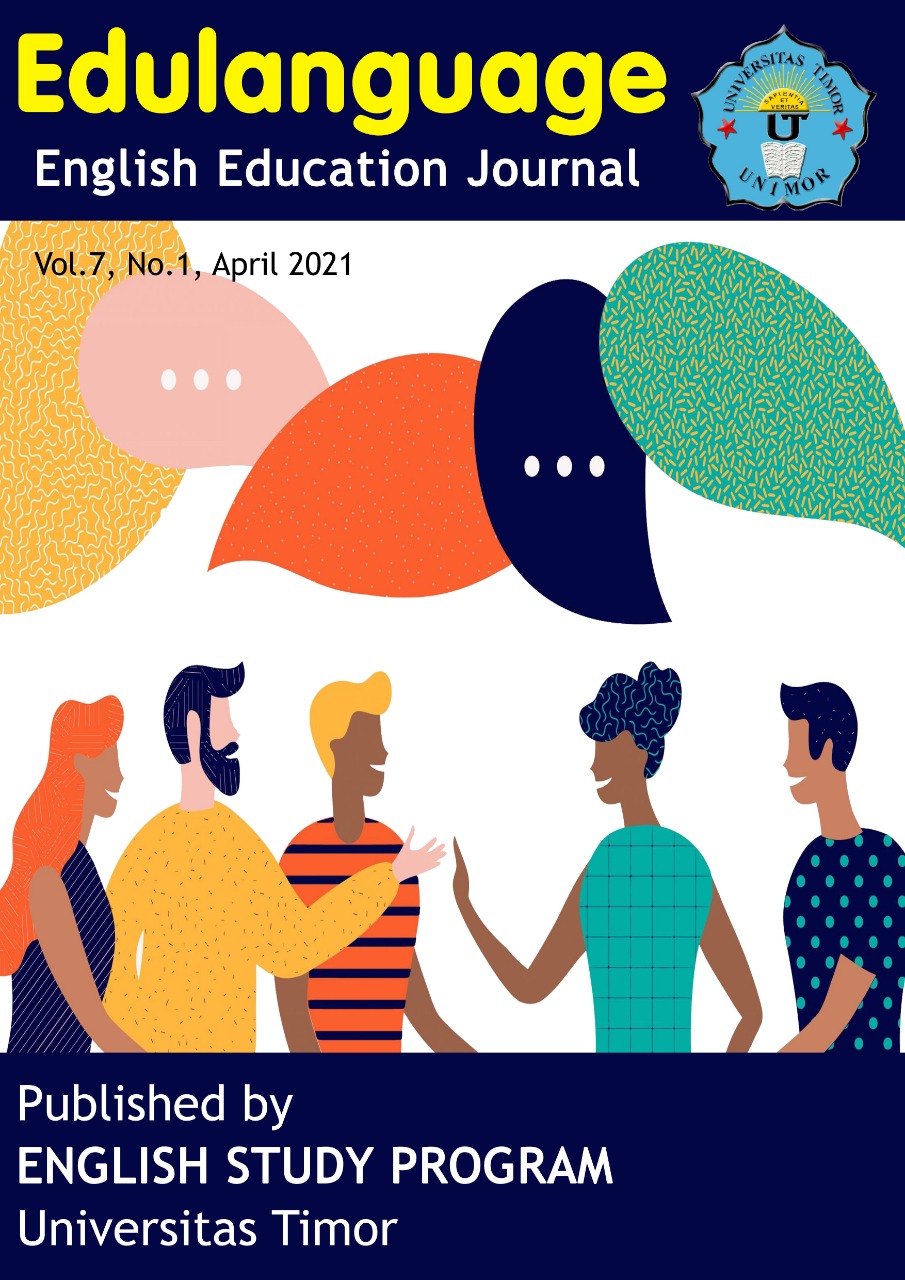IMPROVING THE STUDENTS’ ABILITY IN READING NARRATIVE TEXT THROUGH SERIES OF PICTURE AT GRADE TEN OF SMA KAMPUS PEMATANGSIANTAR
DOI:
https://doi.org/10.32938/edulanguage.v1i1.2439Keywords:
Students’ ability, Reading narrative, Series of pictureAbstract
This research is a descriptive quantitative research that deals with the use of series of to improve the students’ ability in reading narrative text at the grade ten of SMA Kampus Pematangsiantar. The research problem of this study were (1) how is the implementation of picture series in teaching narrative reading of narrative text to grade ten of SMA Kampus Pematangsiantar. The writer applies the theories of Lado (1986), Harmer (1998), Alderson (2000), Nunan (2003), Patel (2008) and Siahaan (2011) to analyze the understanding of reading. The research methodology used the essay test as the instrument of collecting the data by applying pre test, treatment and post test. The result of this study showed that the reading ability of the students after using picture series to teach reading narrative text to grade ten of SMA Kampus Pematangsiantar is significantly improved.
References
Lado, Robert.(1964) Language Teaching: A Scientific Approach. New York: McGraw Hill, Inc.
Nunan, David. (2003) Practical English Language Teaching Teacher’s Textbook. New York: McGraw Hill, Inc.
Patel, M.F and Jain, Praven M. Jain. (2008). English Language Teaching, Jaipur: Sunrise Publisher & distributors.
Pearson, P.D., & Fielding, L. (1991). Comprehension Instruction, NY: Longman.
Siahaan, Sanggam and Sipahutar, R.A, et all. (2011). English Generic Texts Writing II, Pematangsiantar: FKIP UHN.
Wright, Andrew. (1989). Pictures for Language Learning. Cambridge: Cambridge.
Downloads
Published
How to Cite
Issue
Section
License
All material contained in this journal is protected by law. It is prohibited to quote part or all of the contents of this journal for commercial purposes without the approval of the editorial board of the Edulanguage journal. If you find one or more articles contained in the Edulanguage Journal that violate or have the potential to violate your copyright, please report it to us via email to the editor of the Edulanguage Journal. Formal legal aspects of access to all information and articles contained in this journal refer to the terms of the Creative Commons Attribution 4.0 license. All information contained in the Edulanguage Journal is academic in nature. Edulanguage Journal is not responsible for losses that occur due to misuse of information from this journal. The author has copyright and full publication of articles published in the Edulanguage Journal.







